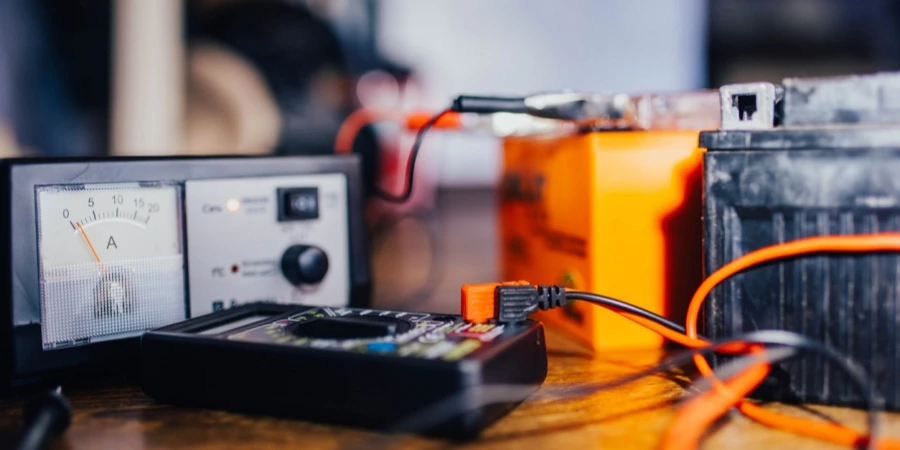Table of Contents
1. Introduction
2. Understanding the main types of motorcycle batteries
3. Market overview and trends in 2024
4. Key factors to consider when selecting a motorcycle battery
5. Top motorcycle batteries of 2025 and their standout features
6. Conclusion
Introduction
Choosing the ideal motorcycle battery plays a big role in maintaining top-notch performance and prolonging the lifespan of your motorcycle. A dependable battery does not just serve the engine but also elevates the riding experience by facilitating smooth bike starts and accommodating advanced electronic functions. Various batteries have different advantages, such as longevity, lower upkeep requirements, and enhanced energy conservation capabilities. In 2025, it’s crucial to grasp the battery types such as lead acid, AGMs, or lithium-ion to select the one that fits your needs. Buying the right battery ensures reliability, efficiency, and long-term value in your choice.
Understanding the main types of motorcycle batteries
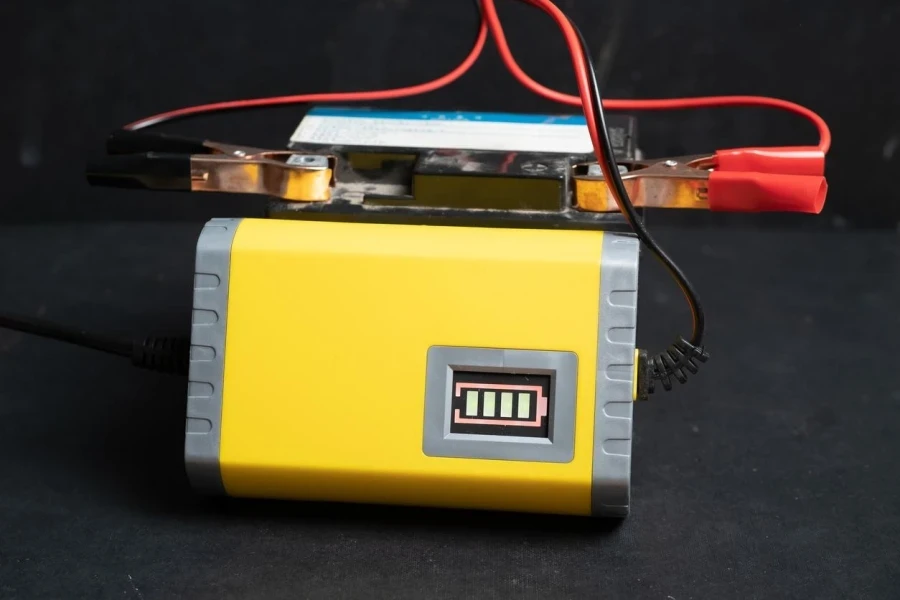
There are three types of motorcycle batteries available: AGM, lead acid, and lithium-ion. Lead acid ones are a cheaper option that utilizes liquid electrolytes for generation. Normally, it demands periodic maintenance, like the frequency addition of distilled water, to avoid the shortage of electrolytes. They are especially preferred by riders who are more concerned with the costs of the batteries, though they could be comparatively heavier and definitely would not last as long as AGM batteries or lithium-ion batteries.
AGM batteries provide a hassle-free option compared to lead acids. They utilize a fiberglass mat to soak up the electrolyte and prevent spills while enabling the battery to stay sealed tight without maintenance needed. AGM batteries are revered for their dependability in tough conditions where durability is essential against vibrations and extreme temperatures. This battery variant delivers more efficiency and longevity than lead acids, making it a preferred selection for challenging riding scenarios.
Lithium-ion lithium batteries stand out due to their enhanced energy efficiency, charging capabilities, and extended lifespan compared to other options for motorcycles, like lead acid and AGM batteries. Moreover, they contribute to the bike’s load, improving control and maneuverability by reducing weight. However, lithium-ion batteries have a higher price tag upfront and may exhibit performance issues in certain conditions. These batteries are particularly well suited for high-performance motorcycles or riders looking for low-maintenance solutions.
Market overview and trends in 2024
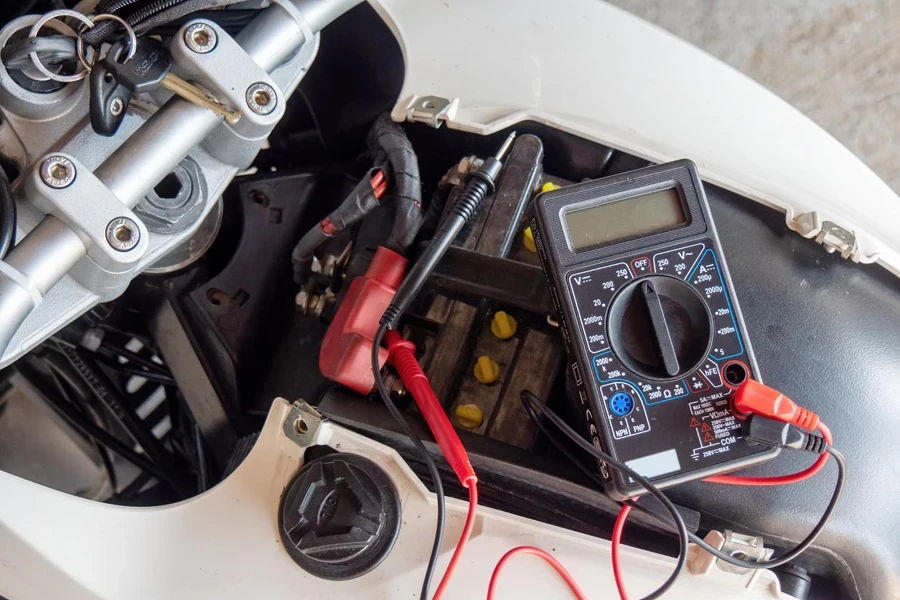
Current Market Size and Growth
Motorcycle batteries are experiencing growth in the international market owing to the rising demand for motorcycles and scooters. The market is predicted to rise from $1.65 billion in 2023 to $2.4 million by 2032. The average growth rate is approximately 4.23%. This increase is mainly due to the growth in the adoption of EVs that generally require batteries in the 10Ah – 20Ah category. The demand for these batteries is expected to remain high because these types of batteries offer the ideal solution for powering motorcycles and scooters.
Consumer Preferences and Technological Advancements
People making a purchase decision on motorcycle batteries are gradually changing, leaning toward more efficient and longer-lasting batteries. Although lead-acid batteries have dominated the market for quite some time because of their cheaper price, lithium-ion batteries are increasingly in demand. These batteries are loved for their compactness, lighter weight, and durability and are perfect for a new range of motorcycles, especially electric ones. The shift in factors consumers seek in motorcycle batteries apart from durability and efficiency is geared towards green improved batteries.
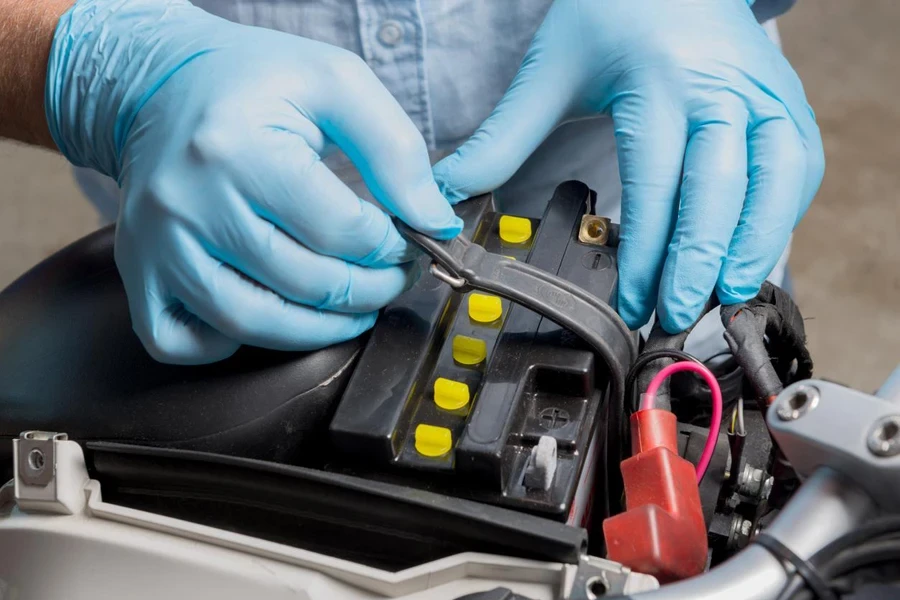
Key factors to consider when selecting a motorcycle battery
Battery Size and Compatibility
Choosing the right battery size is crucial for ensuring safety and optimal performance when it comes to motorcycles. The battery needs to fit in its designated spot and meet the specific voltage and amperage needs of the bike to function correctly without causing any electrical hiccups or harm to the system. This ultimately guarantees a steady power supply that doesn’t call for constant replacements.
Performance Metrics: Cold Cranking Amps (CCA) and Voltage
Evaluating a battery’s performance involves considering metrics like the cold cranking amp (CCA) and voltage levels for suitability assessment. CCA indicates how well a battery can kickstart an engine in cold weather conditions, where a higher rating is crucial for motorcycles used in colder environments to ensure smooth engine startup. The voltage level should typically be 12 volts for modern motorcycles to match the system requirements and avoid damage while ensuring all parts function properly. Inadequate voltage levels could result in less than performance. It might put the motorcycle’s electronics at risk.
Durability and Maintenance Requirements
Durability is crucial for motorcycles that often face tough terrains and changing weather conditions. Batteries such as AGMs (Absorbent Glass Mat) and lithium-ion are recognized for their resilience and ability to withstand vibrations, making them perfect for motorcycles subjected to tough rides or harsh temperatures. AGM batteries are sealed and maintenance-free and provide a lifespan with minimal self-discharge rates. Efficient lithium-ion batteries do not need much maintenance and offer good performance over an extended period of use; however, they necessitate tailored chargers and might exhibit reduced efficiency in extremely cold conditions.
Different types of batteries have varying maintenance needs. Traditional lead acid batteries need regular inspection and topping up with distilled water; in contrast, AGM and lithium-ion batteries are maintenance-free hence saving time and effort in upkeep tasks. This can help prolong the battery’s lifespan and performance reliability by matching the user’s willingness to care for it regularly with the right battery type.
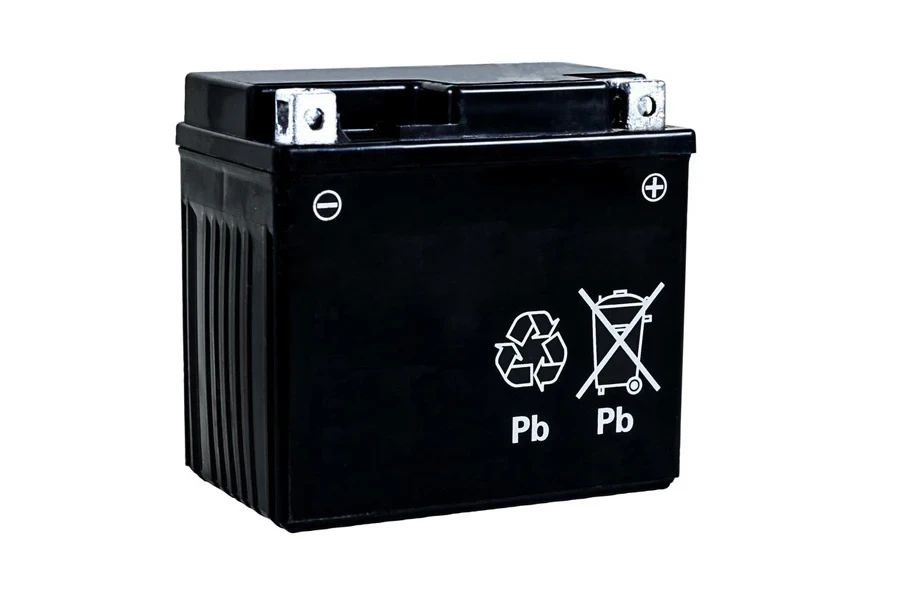
Top motorcycle batteries of 2025 and their standout features
Popular Lead-Acid Batteries
Lead acid batteries are still widely used because of their price and reliability. Brands such as Yuasa and Exide are highly respected for their quality and durability. Yuasa remains a great choice due to its great starting power and sturdy build quality; this makes its batteries a preferred option for standard motorcycles and those used in milder weather conditions. Yuasas batteries are recognized for their ability to provide good performance in older models; their affordable price point also ensures accessibility to a diverse group of users.
Exide stands out as a known brand in the lead acid battery industry. It offers batteries that strike a good balance between affordability and resilience. The Exide batteries are crafted to endure occasional usage and extended storage periods without experiencing discharge loss, a convenient feature for motorcycle riders who don’t ride frequently. Moreover, these batteries come equipped with casings that shield against leaks and corrosion, thus enhancing their longevity.
Leading AGM Batteries
AGM batteries are much more maintenance-free and more durable, and in 2025, Yuasa, ThrottleX, and Deka batteries are some of the popular choices. Yuasa’s AGM batteries are said to be easy to fit and perform consistently in different environments. Their structure enhances the performance and efficiency of the motorcycle lights because they are sealed; hence, you cannot have leakage during cold or hot weather.
ThrottleX has gained popularity among riders who need more CCA and batteries that can fit larger bikes. Their powerful batteries are perfect for touring bikes and those with multiple electronics, where more starting power is crucial. The Ripstock vibration resistance of ThrottleX batteries makes them an excellent choice for motorcycles that frequently travel on rough terrains or for long distances.
Deka is a company that emphasizes power durability and working properties in severe climate conditions. This suits adventure bikes and off-road motorcycles because the Deka batteries are highly resistant to vibration and shock. The batteries also have low internal consumption, so they will always be ready to perform at any time of the year, even if they have not been in use for many months.
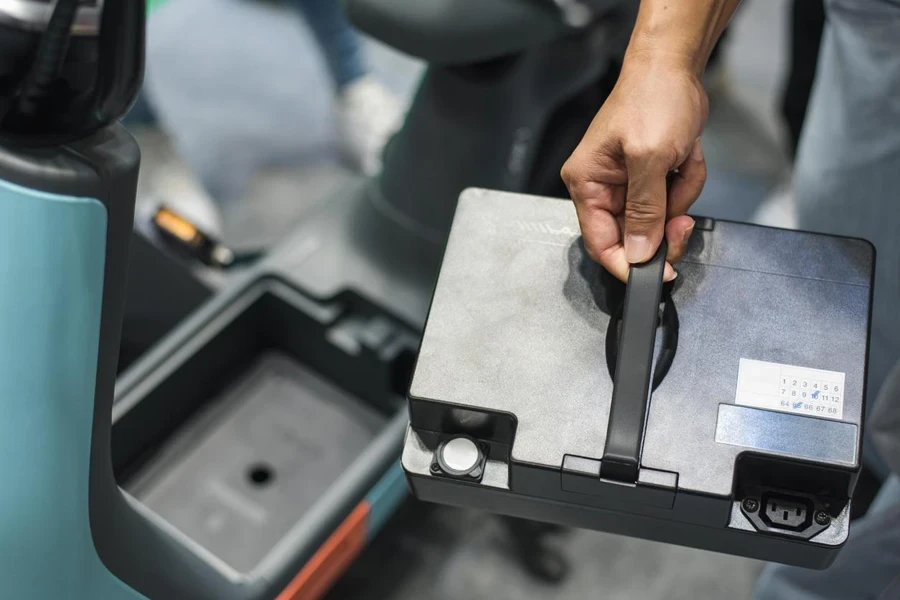
Leading Lithium-Ion Batteries
Riders who want top-notch performance and easy upkeep often opt for lithium-ion batteries as their go-to choice. In 2025, Shorai and other brands like Antigravity and Scorpion are well-known for their technology and excellent power capabilities. Shorai stands out for producing batteries that deliver cold cranking amps and durability, which makes it a perfect fit for sports and high-performance motorcycles. Their batteries also come with built-in charger ports to keep performance at its peak with less user effort.
Antigravity batteries are recognized for their qualities, like the “RE-START” feature that stops the battery from draining automatically. This is a useful perk for motorcycles with various electronic gadgets or prone to accidental power drains due to being left switched on by mistake. These batteries are also popular for their flexibility across a variety of motorcycle models and their capacity to provide power output in a compact form factor.
Scorpion offers top-notch lithium-ion batteries at a price point that appeals to riders seeking the advantages of lithium technology without breaking the bank. Scorpion batteries are recognized for their build quality and reliable starting power across motorcycle models. Moreover, they come with extended warranties, showcasing the brand’s trust in the durability and reliability of their offerings.
Conclusion
In 2025, choosing a motorcycle battery is crucial due to the array of technologies tailored to various requirements. Traditional lead acid batteries still stand as a budget-friendly option for motorcycles, whereas AGM batteries are low-maintenance and long-lasting solutions for diverse riding environments. Lithium-ion batteries offer top-performance and lightweight alternatives for those searching for top-notch efficiency and less maintenance. Buyers should consider aspects like the type of battery used for compatibility and particular usage scenarios for their motorcycles; this way, they can select a battery that offers top-notch performance and reliability.
